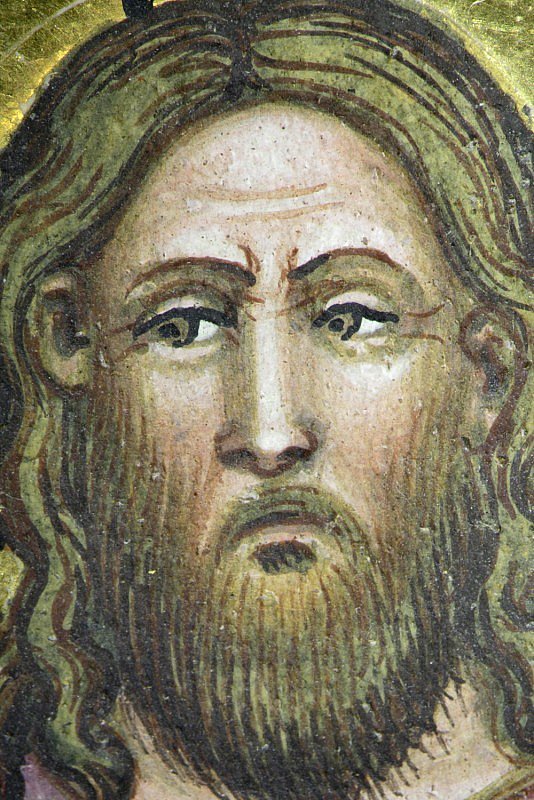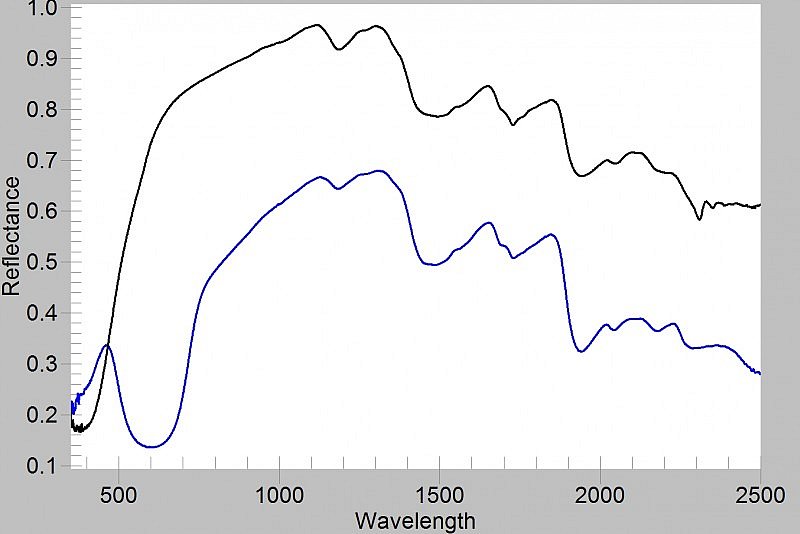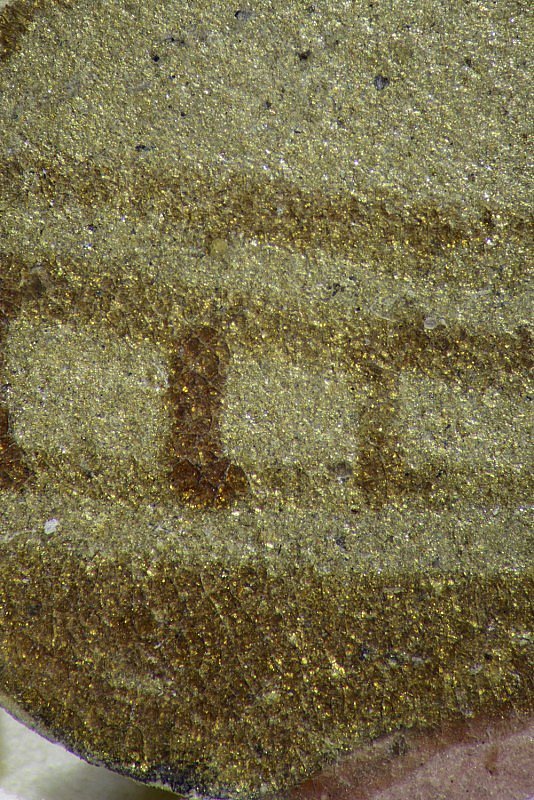Script and Textual Contents
Description and Contents
The text on the reverse of the initials is in Latin, written in the rounded Italian type of Gothic bookhand (textualis).
Marlay cutting It. 13A: the initial S opened the Introit to the Mass for the feast of the Purification of the Virgin (2 February), beginning Suscepimus Deus misericordiam, originally on fol. 42 in Corale 2 (a Gradual). The Macro-XRF scan of the reverse reveals the fragmentary rubric, In purifi[catione] b[ea]tissime virgi[nis] Marie. cum can[delae] ceperint dari. In[tr]at cantor
MS 5-1979: the initial D opened the Introit to the Mass for the feast of St Clement (23 November), beginning Dicit dominus sermones mei, originally on fol. 159 in Corale 2 (a Gradual)
Marlay cutting It. 13.i: the initial L opened the responsory for the first lesson of Matins for the feast of St Laurence (10 August), beginning Levita Laurentius bonum operatus, originally on fol. 62 in Corale 19 (an Antiphoner). The fragmentary text on the reverse is from the versicle for the third lesson of the first nocturn at Matins for the feast of St Laurence, [Mea nox obscurum non habet, sed omnia in luce cl]arescunt. B[eate Laurenti martyr Christi intercede pro nobis.] In se[cundo nocturne]
Marlay cutting It. 13.ii: the initial I may have opened the Introit to the Mass for Easter Monday, beginning Introduxit vos Dominus in terram fluentem lac et mel, originally on fol. 19 in Corale 3 (a Gradual) or in another, lost Gradual. The isolated letters and notes on the reverse do not allow for a firm identification



Christ the Redeemer
Historiated initial I from a Gradual, 1373-1382 or c.1409, with foliate ornament added later, probably c.1450
Christ holds an image of the Earth, the so-called ‘T map’ from Ptolemy’s Geography, inscribed with the three continents known at the time: Asia, Uropia, Africha. Christ’s figure forms the initial I which probably opened the Mass for Easter Monday in a Gradual. It may be the work of Don Silvestro dei Gherarducci’s collaborator, the Maestro delle Canzoni, from Santa Maria degli Angeli’s Corale 3 (dated 1409, but containing later additions). Alternatively, it may have been painted by Cenni di Francesco di Ser Cenni who was based at San Pietro Maggiore in Florence in the 1380s and contributed to a (now lost) set of Choir Books illuminated between 1373 and 1382. This image differs from the other three in materials: it contains of a purple hue obtained with an insect-based dye, umber in the darkest portions of Christ’s flesh tones (see layer ‘elemental map Mn’) and yellow ochre in the highlights in his hair (hotspot 1).
Whoever painted Christ’s figure, he was not responsible for the letter shape and the surrounding acanthus; there are stylistic as well as technical differences between the two areas. Spectral evidence for the use of a lipidic paint binder, most likely egg yolk, is found only in the figure of Christ (hotspot 2), suggesting that it was painted by an artist familiar with the egg tempera technique commonly used on panel. The initial and the surrounding leaves were supplied later, probably by Niccolò Rosselli (1407-1471), an illuminator who became a monk at Santa Maria degli Angeli in 1429, contributed to other leaves in Corale 3, and was paid for his work at the scriptorium in 1454.
The later date is supported by the fact that the mosaic gold decorations present on either side of the initial (hotspot 3) are outlined in a very different way from those painted in the 1370s and 1390s (see for example hotspot 3 for Marlay Cutting It. 13i) and even from those still present in Corale 3 and painted in the 1410s.
Related content: Initials from Choir Books
- Artists: The Artists associated with the initial of Christ the Redeemer
- Texts and Images: Christ the Redeemer
- Description and Contents: Physical Description
- Description and Contents: Script and Textual Contents
- Artists' Materials: Differences in palette
- Artists' Materials: Selective use of egg yolk binder
- Artists' Techniques: Gold tooling
- Artists' Techniques: Painting the flesh
Related content: Lab
- Overview of Artists' Materials: 'Mosaic gold'
- Overview of Artists' Materials: Earth pigments
- Overview of Artists' Materials: Egg yolk
- Overview of Artists' Materials: Gold
- Analytical Methods: Macro-XRF scanning
- Analytical Methods: Optical microscopy
- Analytical Methods: UV-vis-NIR reflectance spectroscopy
